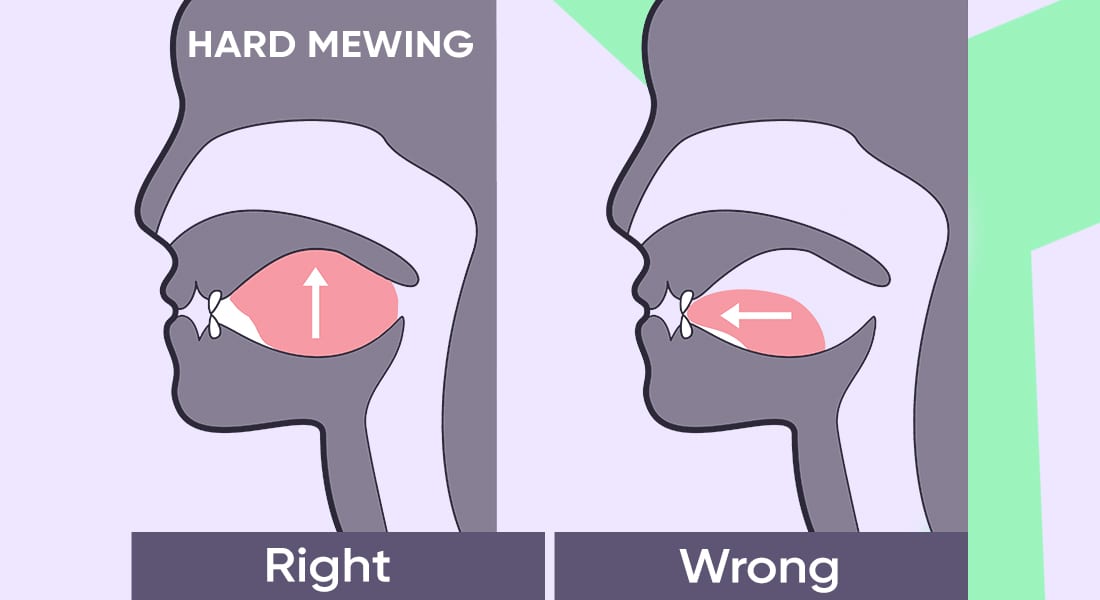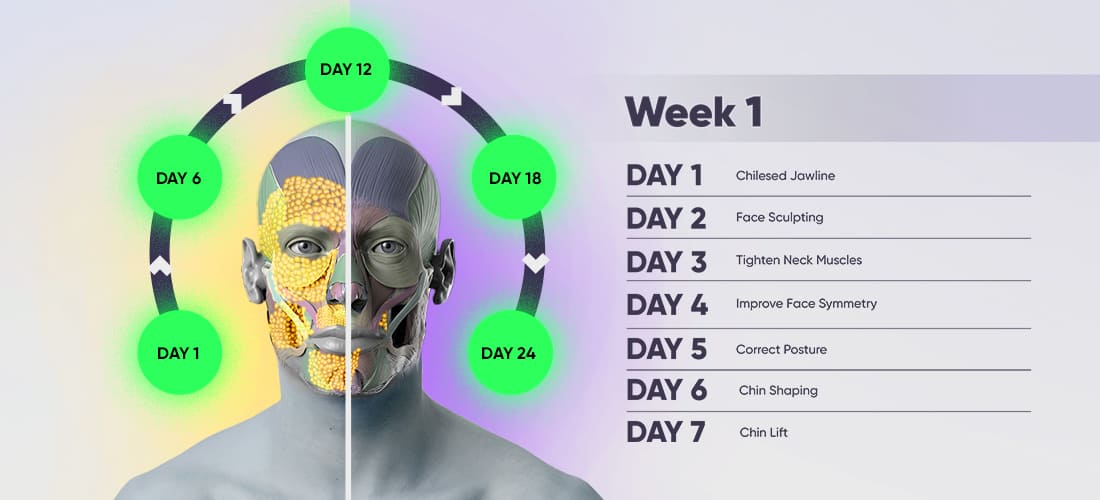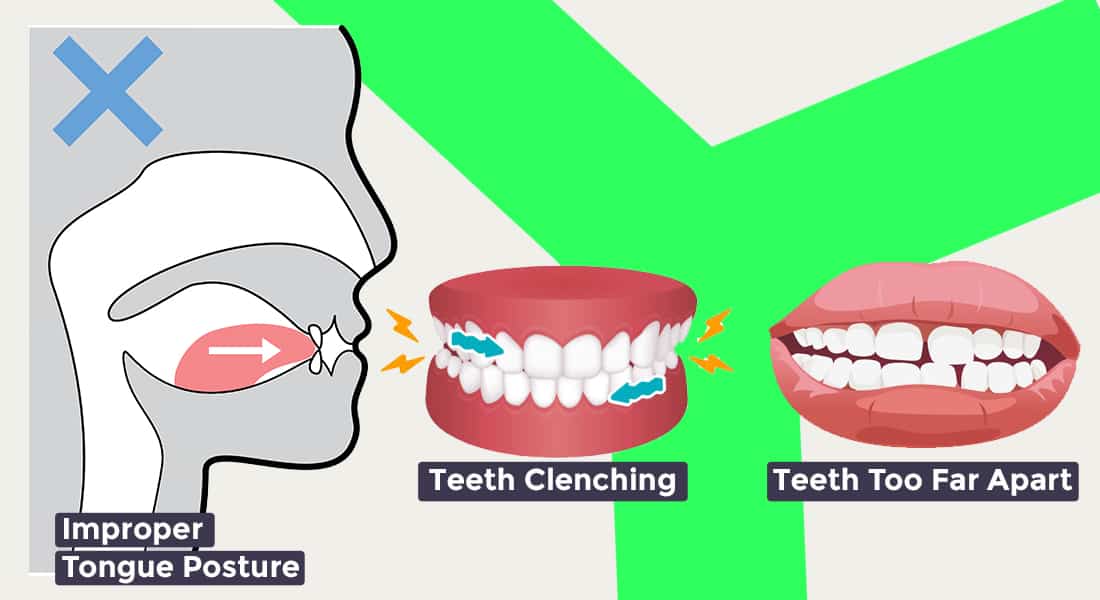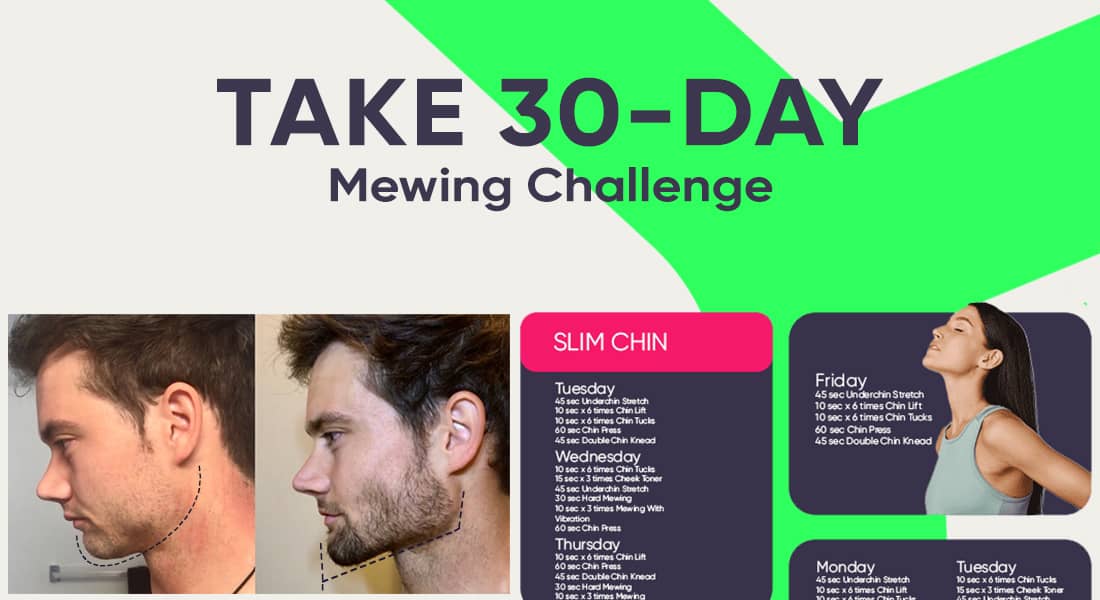
If you’re reading this article, you’re likely someone who’s already started mewing and is facing some challenges or someone thinking about adopting the practice. Either way, you’ve come to the right place.
Although mewing has experienced a rapid popularity surge in recent years, the technique itself has been around for decades. However, it wasn’t until Dr. Mew and his son, Mike Mew, brought attention to it that people began noticing the benefits of mewing.
As more and more have jumped aboard the mewing train, there has been an increasing number of reports of people claiming to have experienced amazing benefits, but also some that have endured pain and discomfort from mewing.
If you belong to the latter group, you might wonder, why is mewing so hard? And the answer is it isn’t – you’re probably doing it wrong!
If mewing causes pain or discomfort, here’s what you should do -> continue reading our article or skip the long read by taking the quiz below.
Learn about our app which was designed to make mewing safe, easy, and effective.
The Difference Between “Hard Mewing” and “Mewing Being Hard”

First, it’s very important to distinguish between “hard mewing” and “mewing being hard.”
What is hard mewing? Hard mewing is a more intense form of mewing. Whereas soft mewing focuses on natural and relaxed tongue placement against the roof of your mouth, hard mewing involves forceful pushing of the tongue up.
With hard mewing, a significant force is applied to the palate to achieve proper jaw posture.
When mewing is hard because it causes pain or discomfort, that is an entirely different thing. If you’ve experienced painful jaws, tongue, mouth, teeth, chin, nose, or neck during or after mewing, you are probably not mewing correctly. Learn how mewing is done to fix your problems with mewing.
Download our Mewing.coach app to find learning resources and video tutorials on proper mewing techniques to help you learn hard mewing, as well as solve the issues making mewing hard for you.

3 Reasons Mewing Could Feel Uncomfortable
Mewing will only be hard and borderline painful if you are not doing it right. Sure, it might feel a little strange or even somewhat uncomfortable at first because your tongue is getting adjusted to the new position – but it shouldn’t be painful.
If your jaws, cheek, tongue, or neck hurt, try to learn more about the mewing technique and take a look at the complete list of mewing mistakes to ensure you are not doing something wrong.
Here are some of the reasons you might be having a hard time mewing:

Improper Tongue Posture
Improper tongue posture is one of the main reasons mewing might feel uncomfortable. Perhaps you are not placing your tongue on the palate as you should or are just pushing with the tip of your tongue.
To mew correctly, your entire tongue needs to be resting on the roof of your mouth, and your front teeth should come together, gently touching, while your lips are sealed so that you cannot mouth breathe.
Teeth Clenching
Another reason you might be feeling uncomfortable while you mew is if you are clenching your jaws too much. This constant force may cause tooth damage and jaw pain while mewing.
Teeth Too Far Apart
The opposite of clenching your teeth is not good as well. If you mew with your teeth too far apart, it means you are not maintaining proper jaw posture, which is equally important as the position of your tongue.
Your lower jaw should come together with your upper jaw while you keep your mouth closed. Otherwise, you could worsen your crooked teeth or do some other damage.
Mewing Requires Practice
It’s important to remember that practice makes perfect. Like anything else, you need to allow your face and body to adjust and get used to the practice of constant force.
If you find mewing particularly hard, here are some things you can do:
- Make sure your whole tongue is up on the palate
- Watch a few how-to videos on the Mewing.coach app
- Be gentle, and don’t try hard mewing until you are absolutely sure you are mewing correctly
- Don’t push your tongue too hard on the palate
- Keep practicing daily
- Consult a medical professional

And, before you give up, read our comprehensive mewing advantages list to remind yourself it’s worth sticking to this exercise.
Download the Mewing.coach app for countless resources on mewing and good health. With the help of our educational and instructional videos, special exercises, and daily reminders, you will improve your mewing technique and eliminate the discomfort in no time!



